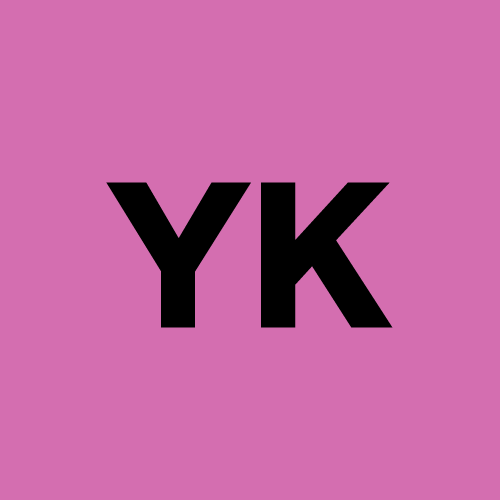Google Ads vs. Meta Ads: Where Should You Spend Your Budget?
 yamini k
yamini kIn the fast-paced world of digital marketing, choosing the right advertising platform can make or break your campaign. Two of the biggest players in the online advertising space are Google Ads and Meta Ads (formerly known as Facebook Ads). Both platforms offer robust tools and access to billions of users, but which one is better for your business? Let’s dive into the comparison to help you make the most informed decision about where to allocate your marketing budget.
Understanding Google Ads
Google Ads is a pay-per-click (PPC) advertising platform that allows businesses to display their ads across the Google Search Network, Display Network, YouTube, and more. It’s a keyword-driven system where advertisers bid on specific terms that potential customers are searching for.
Strengths of Google Ads:
High Purchase Intent: Users searching on Google are often closer to the purchase decision, which means higher conversion rates.
Wide Reach: Google's reach spans billions of searches per day across search and display platforms.
Diverse Ad Formats: From Search Ads, Display Ads, and Shopping Ads to YouTube Video Ads, you can tailor your campaign based on your product and audience.
Best For:
Search-driven campaigns
E-commerce businesses
Brands targeting customers with high intent
Industries with high B2B lead generation goals
Understanding Meta Ads
Meta Ads, which include Facebook Ads, Instagram Ads, Messenger, and Audience Network, focus on visually engaging content and advanced audience targeting capabilities. Unlike search engine marketing, Meta Ads are interruption-based, meaning your ad appears while users are browsing social media, not searching for your product directly.
Strengths of Meta Ads:
Advanced Targeting: Use demographic, interest-based, and behavioral targeting to reach niche audiences.
Visual-First Platform: Image and video ads dominate, making it ideal for brand storytelling.
Custom Audiences and Lookalike Audiences: These tools allow you to target previous visitors or reach new people similar to your best customers.
Best For:
Brand awareness campaigns
Lifestyle products
B2C companies aiming for engagement and influence
Remarketing to previously engaged users
Comparing the Cost: CPC, CPA, and ROAS
Budget is one of the biggest considerations in digital advertising. Here’s how both platforms typically compare:
Metric | Google Ads | Meta Ads |
Average CPC | Higher (~$1–$2+) | Lower (~$0.50–$1) |
Average CPA | Competitive but varies by industry | Generally lower for B2C |
ROAS | Strong for high-intent keywords | Strong for brand engagement and awareness |
Audience Targeting Capabilities
Google Ads Targeting:
Keywords
Location and device
Custom Intent Audiences
In-market Audiences
Remarketing
Meta Ads Targeting:
Detailed demographics (age, gender, location, etc.)
Interests and behaviors
Connections and device usage
Custom and Lookalike Audiences
If your digital marketing strategy heavily relies on precise audience segmentation, Meta Ads can give you the edge.
Ad Format and Creative Control
Ad creatives play a vital role in the success of your campaign.
Google Ads Formats:
Text-based Search Ads
Visual Display Ads
YouTube Video Ads
Shopping Ads with product info
Meta Ads Formats:
Image Ads
Carousel Ads
Video Ads
Reels and Stories
Instant Experience Ads
For visual branding, Meta Ads win hands down. But for product-based intent, Google Ads excels.
Analytics and Reporting
Both platforms offer comprehensive analytics tools to measure your campaign performance:
Google Ads: Google Analytics integration, conversion tracking, attribution modeling
Meta Ads: Meta Pixel, advanced engagement metrics, cross-platform tracking
To maximize ROI, align your KPIs with each platform's strengths. For instance, use Google Ads for cost-per-acquisition (CPA) goals and Meta Ads for cost-per-engagement (CPE) or reach.
When to Use Both Platforms
Many businesses find success by combining both platforms in their digital marketing funnel:
Use Meta Ads for awareness and engagement (top of funnel)
Retarget with Google Display Ads or Search Ads for conversions (bottom of funnel)
This approach creates a full-funnel marketing strategy that nurtures leads from discovery to decision.
Which Platform is Right for You?
Here’s a quick decision framework:
Business Goal | Recommended Platform |
Drive immediate sales | Google Ads |
Increase brand visibility | Meta Ads |
Target high-intent search users | Google Ads |
Reach niche demographics | Meta Ads |
Launch a new product | Both |
Optimize ROI across the funnel | Both |
There is no one-size-fits-all answer. The best way to determine the right platform is to:
Define your digital marketing objectives*.*
Test both platforms with small ad budgets*.*
Analyze the data and optimize accordingly.
With a solid strategy, whether you're on Google Ads*, **Meta Ads*, or both, your brand can thrive in the competitive world of *online marketing**.*
Subscribe to my newsletter
Read articles from yamini k directly inside your inbox. Subscribe to the newsletter, and don't miss out.
Written by
